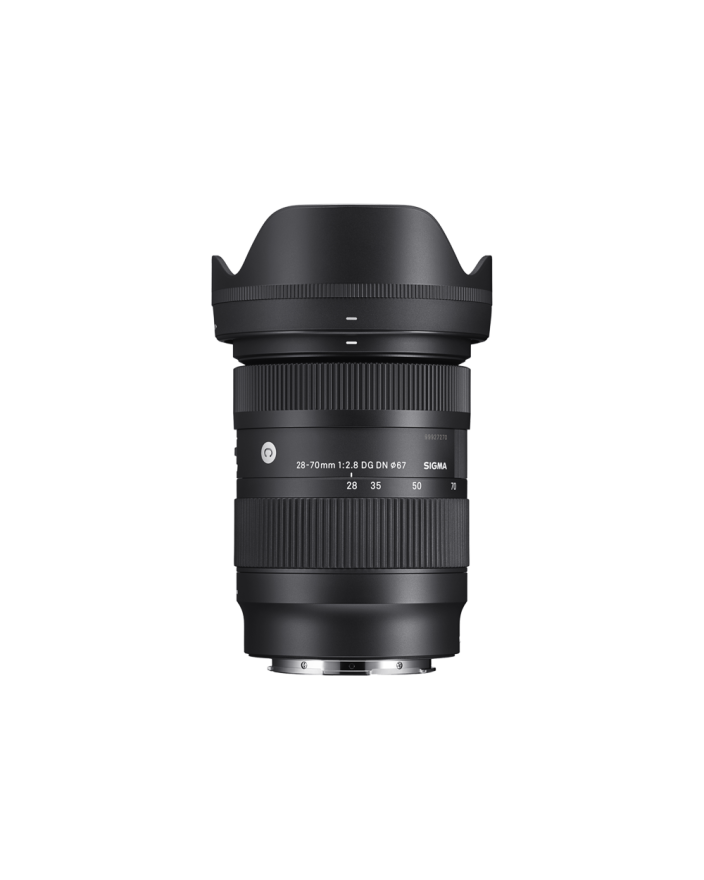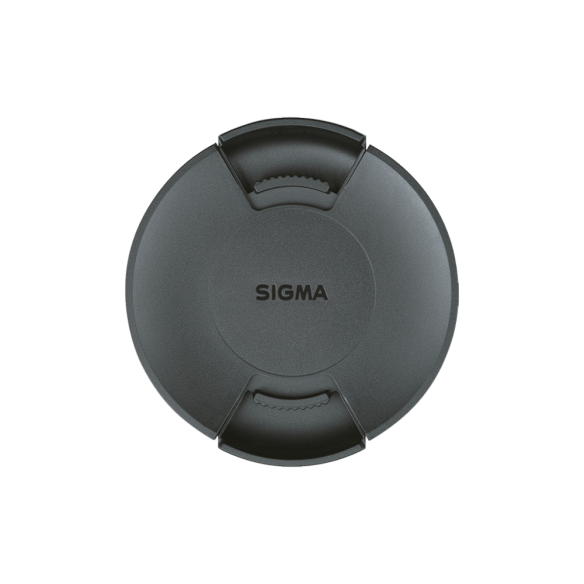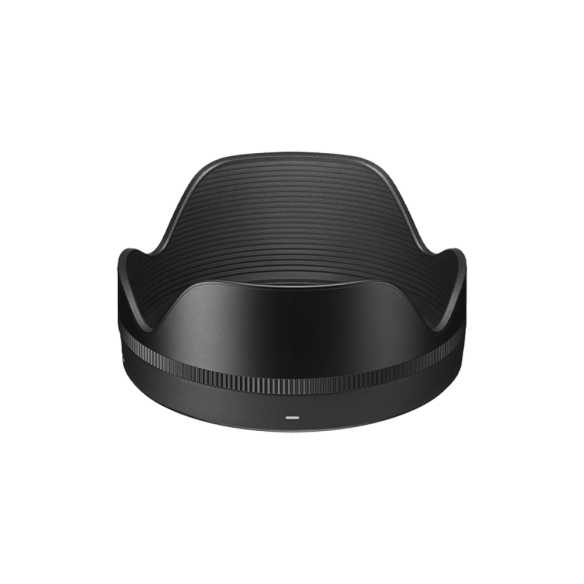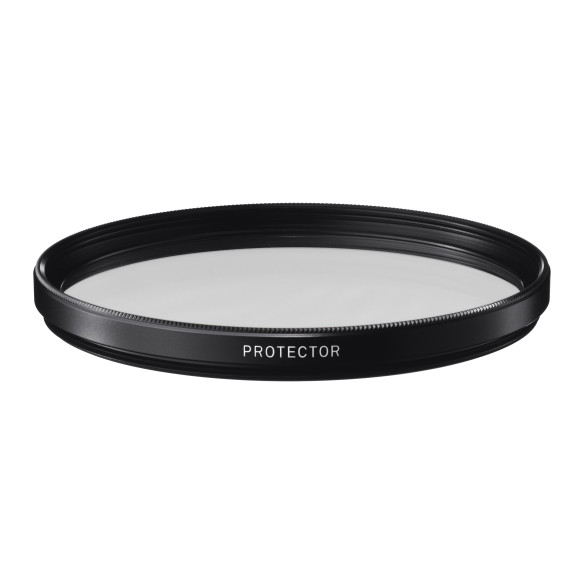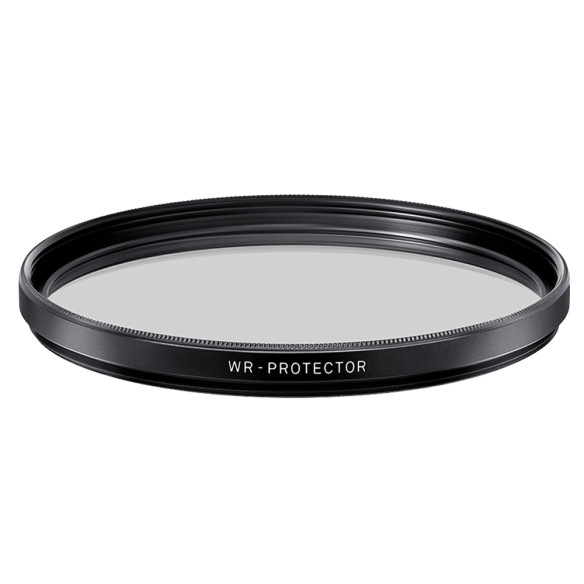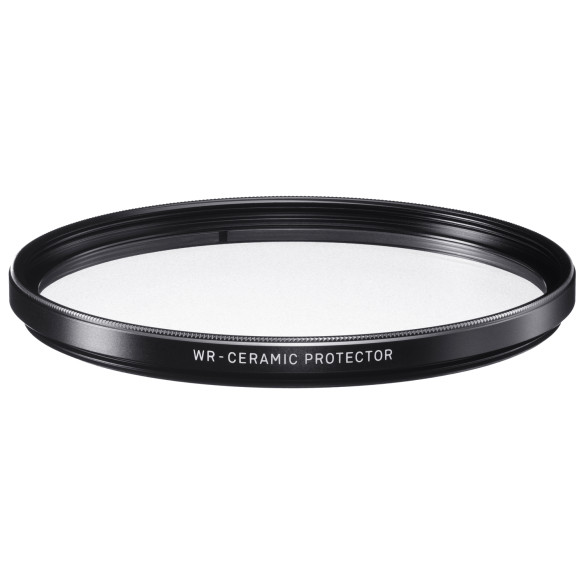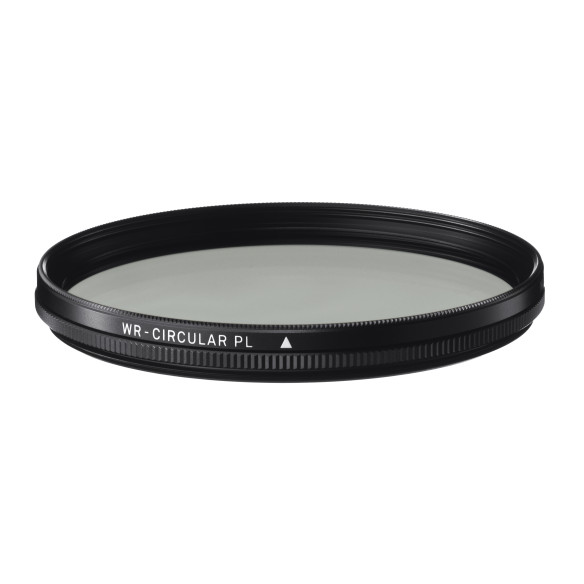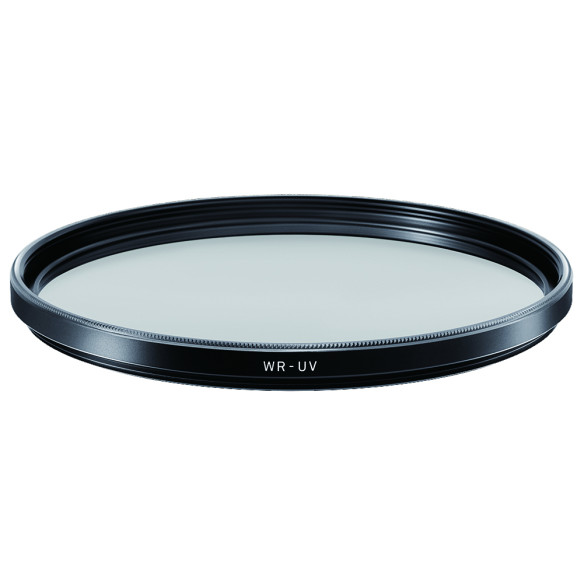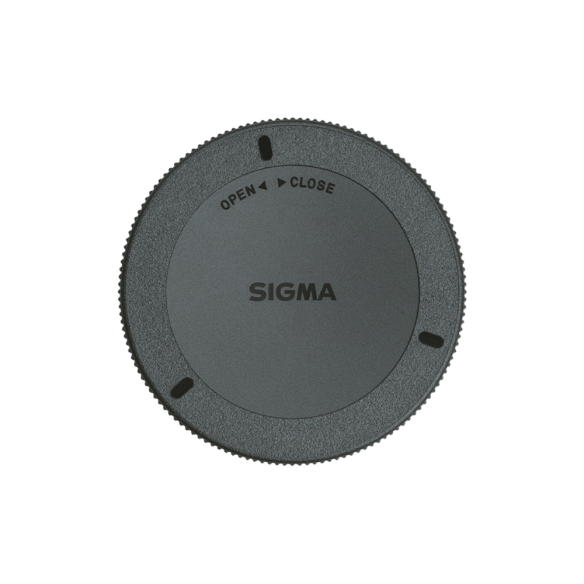CONTEMPORARY28-70mm F2.8 DG DN
- Smallest and lightest lens in its class
- Uniformly sharp from the center to the edges
- Thorough correction of aberrations
- Super Multi-Layer Coating and Nano Porous Coating
- Water and oil repellant front coating
- Responsive and near-silent stepping focus motor
- Mount with dust and splash resistant structure
- TSC (Thermally Stable Composite) construction
- Rounded 9-blade diaphragm
- Compatible with Lens Aberration Correction

Sony E-mount 72.2mm x 103.5mm / 2.8 in. x 4.1 in.
Sony E-mount: 470g / 16.6 oz.
Design based on Sigma’s Art line, with the same uncompromising optical performance
The optical design of the Sigma 28-70mm F2.8 DG DN | Contemporary is based on the 24-70mm F2.8 DG DN | Art, which is renowned for its outstanding optical performance throughout its zoom range. True to the Contemporary line’s core concept, the 28-70mm F2.8 DG DN | Contemporary was developed to offer the right balance of performance and portability, and as such, this large-aperture standard zoom delivers outstanding image quality that rivals Art line lenses in a body light enough for day-to-day use. Building on state-of-the-art technology, the 28-70mm F2.8 DG DN | Contemporary has an advanced optical design that includes three aspherical, two FLD, and two SLD elements. Despite using fewer elements in total than the 24-70mm F2.8 DG DN | Art, the design results in a thorough correction of axial chromatic aberration and sagittal coma aberration, which cannot be corrected in-camera, allowing users to create images that are uniformly sharp from the center to the edges of the frame. Along with its anti-ghosting design, the use of Super Multi-Layer Coating and Nano Porous Coating means well-controlled flare for high-contrast results in backlit conditions. It also features a water and oil repellant coating on the front side of the lens.
In short, the Sigma 28-70mm F2.8 DG DN | Contemporary combines all of the key optical features required of a large-aperture standard zoom lens, which are essential for photographing a wide variety of subjects in a range of shooting conditions.
A lightweight and compact body ― ideal for day-to-day use
Being slightly less wide-angle than the 24-70mm F2.8 DG DN | Art has allowed a significant reduction in the size of the 28-70mm F2.8 DG DN | Contemporary lens body. In order to fit with the design concept of the Contemporary line, which balances performance with portability, the new lens features a simpler dust and splash resistant structure and smaller switches. This makes it the smallest and lightest lens in its class*.
The new lens features just one lightweight focusing element, which keeps the AF unit small. This, along with a quiet and fast stepping motor, makes for responsive and near-silent autofocus performance.
The 28-70mm F2.8 DG DN | Contemporary weighs in at 470g, and when attached to the Sigma fp, the entire setup is 890g. The supreme portability afforded by a camera system that weighs less than 1kg gives photographers a huge amount of freedom and flexibility to achieve their creative vision. It’s also a perfect combination for filmmakers looking for a high-performance, lightweight, easy-to-handle camera system that works well with a gimbal and other accessories.
A large-aperture, standard zoom lens that is light and small enough for casual outings, the 28-70mm F2.8 DG DN | Contemporary will open up new photographic possibilities for better and more creative results.
* As a standard zoom lens for full-frame mirrorless cameras with F2.8 brightness throughout the zoom range (Source: Sigma, as of February 2021)
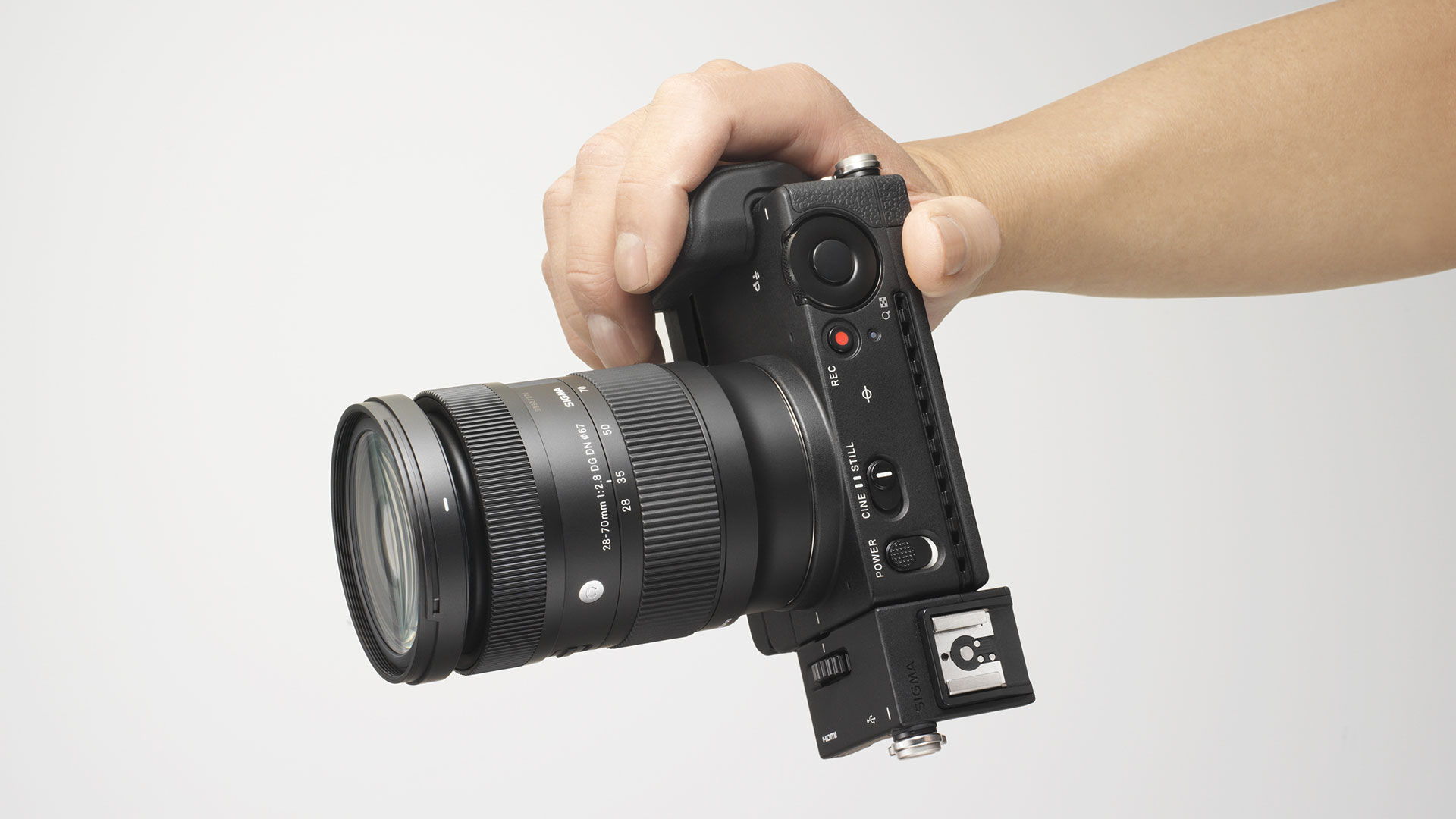

Superb build quality with exceptional attention to detail that provides an exceptional user experience
With priority given to optimal portability, the body of the Sigma 28-70mm F2.8 DG DN | Contemporary consists primarily of lightweight parts. While conventional wisdom states that it is more difficult to ensure processing accuracy for plastic parts than metal parts, there has been no compromise whatsoever on build quality for the 28-70mm F2.8 DG DN | Contemporary. One reason for this is that it uses a type of polycarbonate called TSC (Thermally Stable Composite), which has a comparable level of thermal shrinkage to aluminum. This helps reduce differences between the thermal shrinkage of the metal and non-metal parts, ensuring stable levels of performance even in an environment with extreme temperature changes. The use of polycarbonates in the construction of zoom and focus rings can make their operation feel less premium, but with careful treatment to the precision of these parts and adjusting the movement with the lubricant appropriately, the rings offer a precise action with an exceptionally high-quality feel.
What allows us to achieve these precisely produced parts and such premium aesthetics is the impressive standard of manufacturing technology and rigorous quality control we have at the Sigma Aizu Factory.
The Sigma 28-70mm F2.8 DG DN | Contemporary offers a new and improved photographic experience for mirrorless users who require a fast aperture standard zoom lens. Its premium, intuitive build makes it as exciting to use the lens as it is to see the incredible images it can produce, inspiring you to start achieving your creative potential.
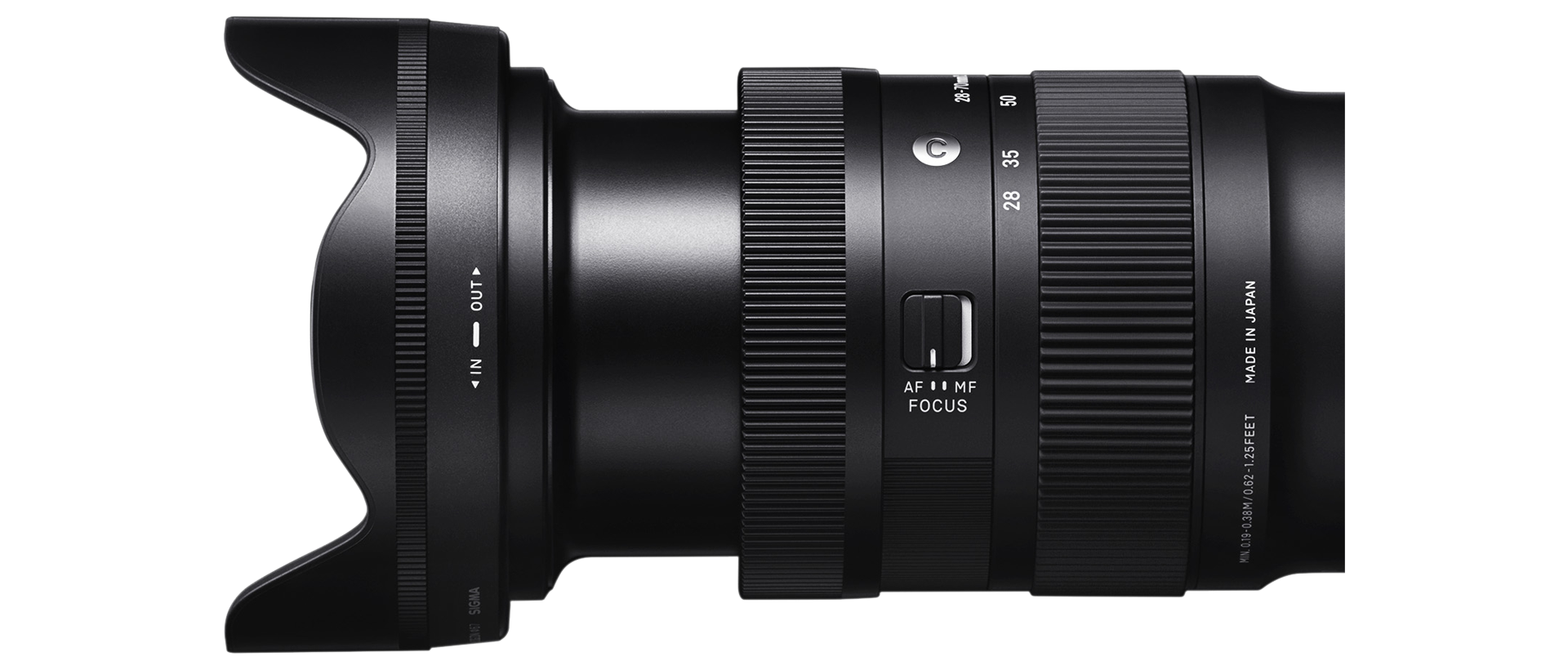

LENS CONSTRUCTION
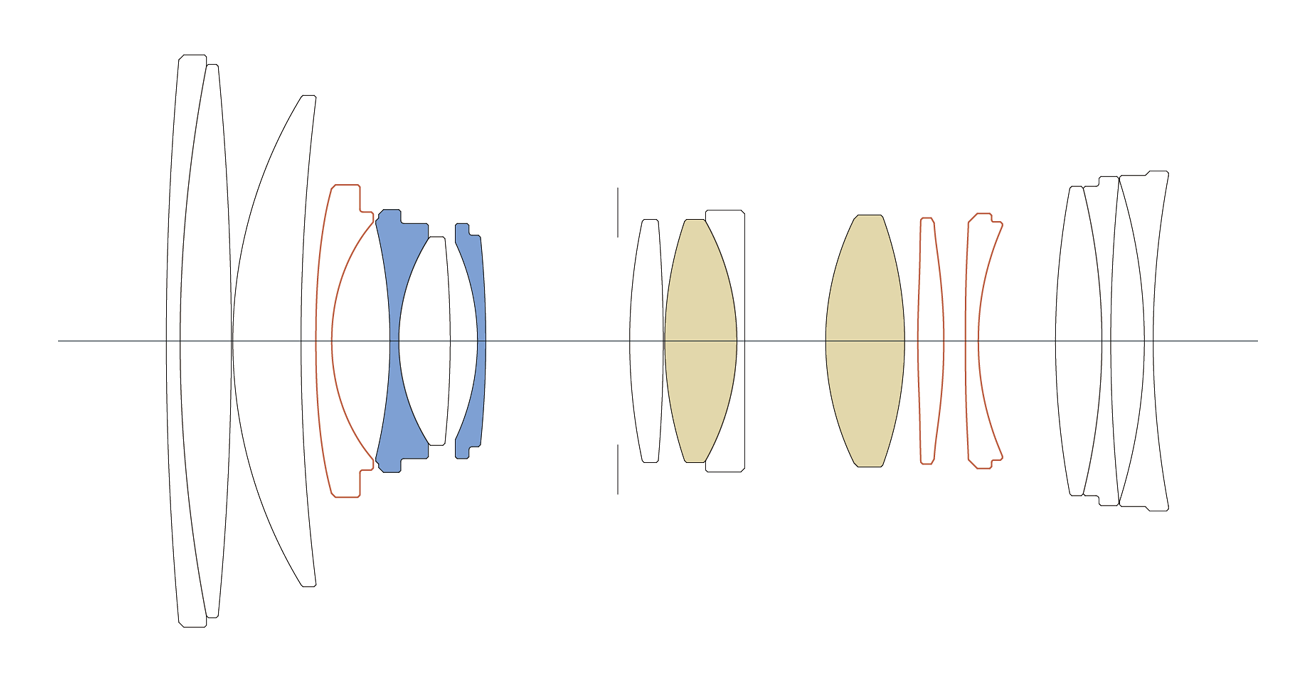

- FLD Glass
- SLD Glass
- Aspherical Lens
MTF CHART
The MTF (Modulation Transfer Function) is one of the measurements for evaluating a lens' performance, and it shows how faithfully the contrast of the subject can be reproduced on the image plane. The horizontal axis shows the image height (distance from the center of the image in mm) and the vertical axis shows the contrast value (maximum value is 1).
The closer the 10 line pairs/mm curve is to 1, the higher the contrast and clarity of the lens is, and similarly, the closer the 30 line pairs/mm curve is to 1, the better the resolution and sharpness of the lens is.
*The MTF chart depicts the result at the wide-open aperture.
*For mirrorless lenses that support distortion correction, the horizontal axis shows the image height equivalent to when an L-Mount lens is attached to a Sigma L-Mount camera with distortion correction applied. (The effect of distortion correction may differ depending on the mount and camera used.)
*The spatial frequency indicates the variation on the image plane before distortion correction is performed.
Spatial Frequency
S: Sagittal Line
M: Meridional Line
10lp/mm




30lp/mm




DIFFRACTION MTF 28MM
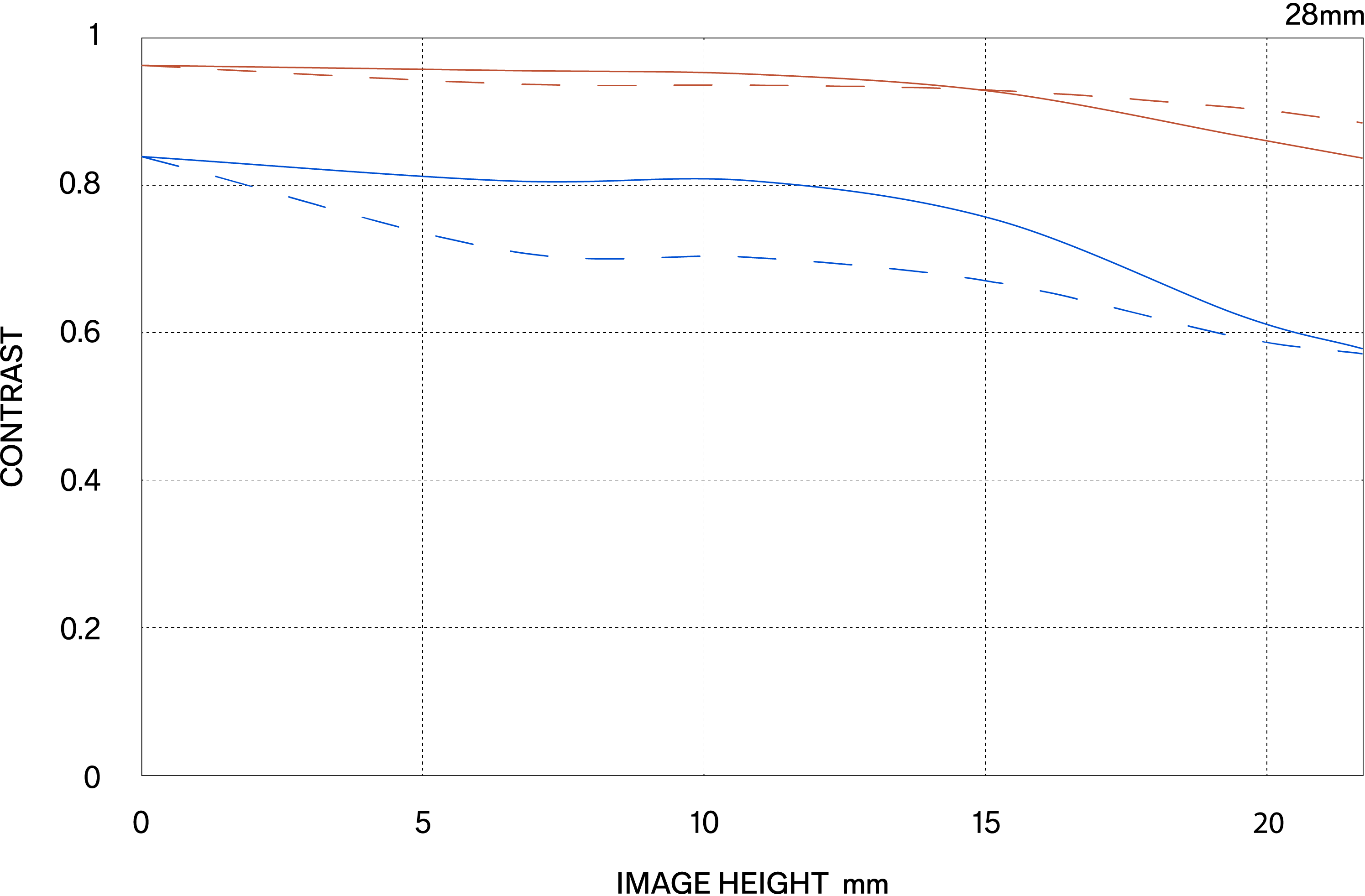

DIFFRACTION MTF 70MM
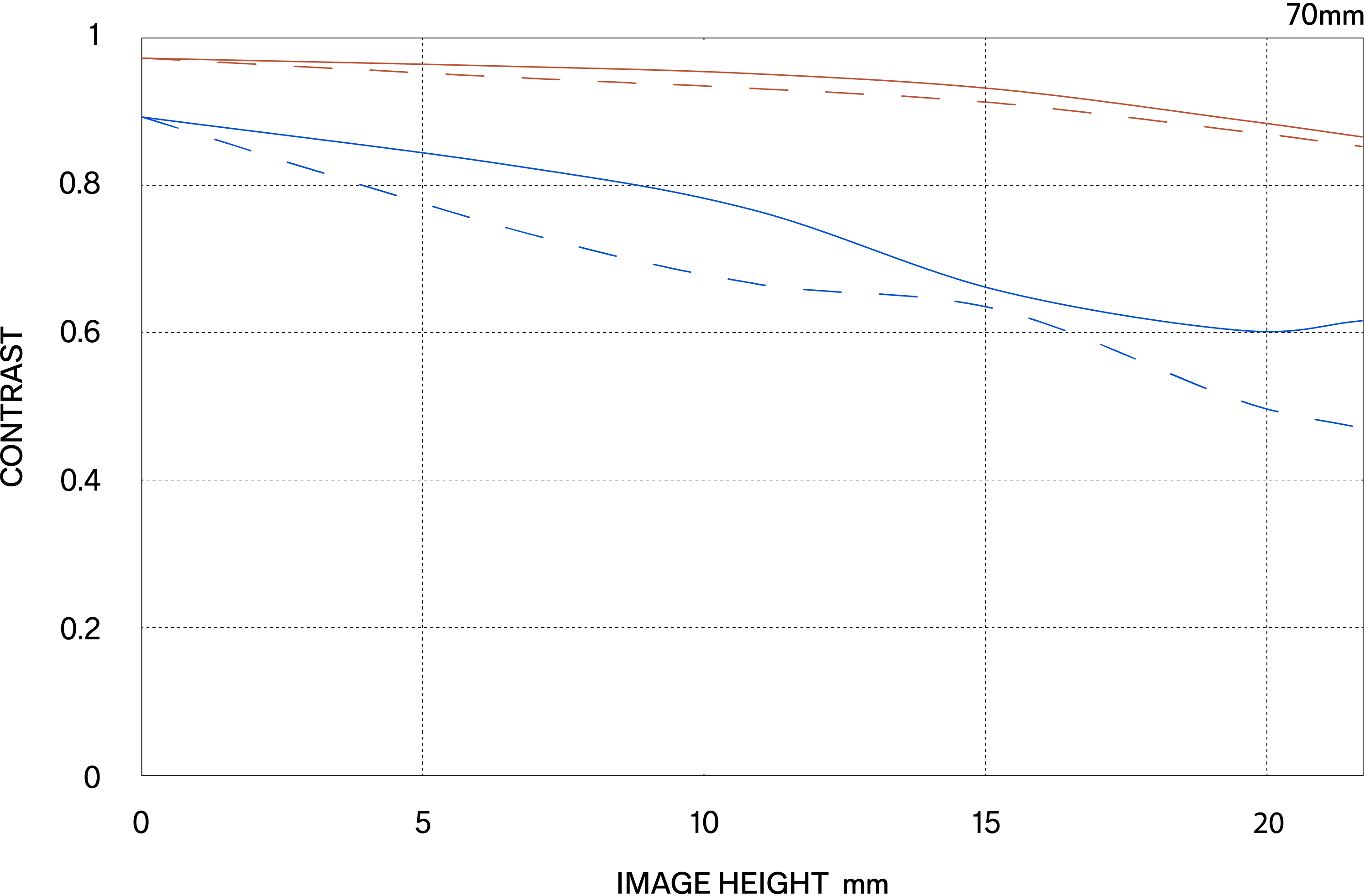

GEOMETRICAL MTF 28mm
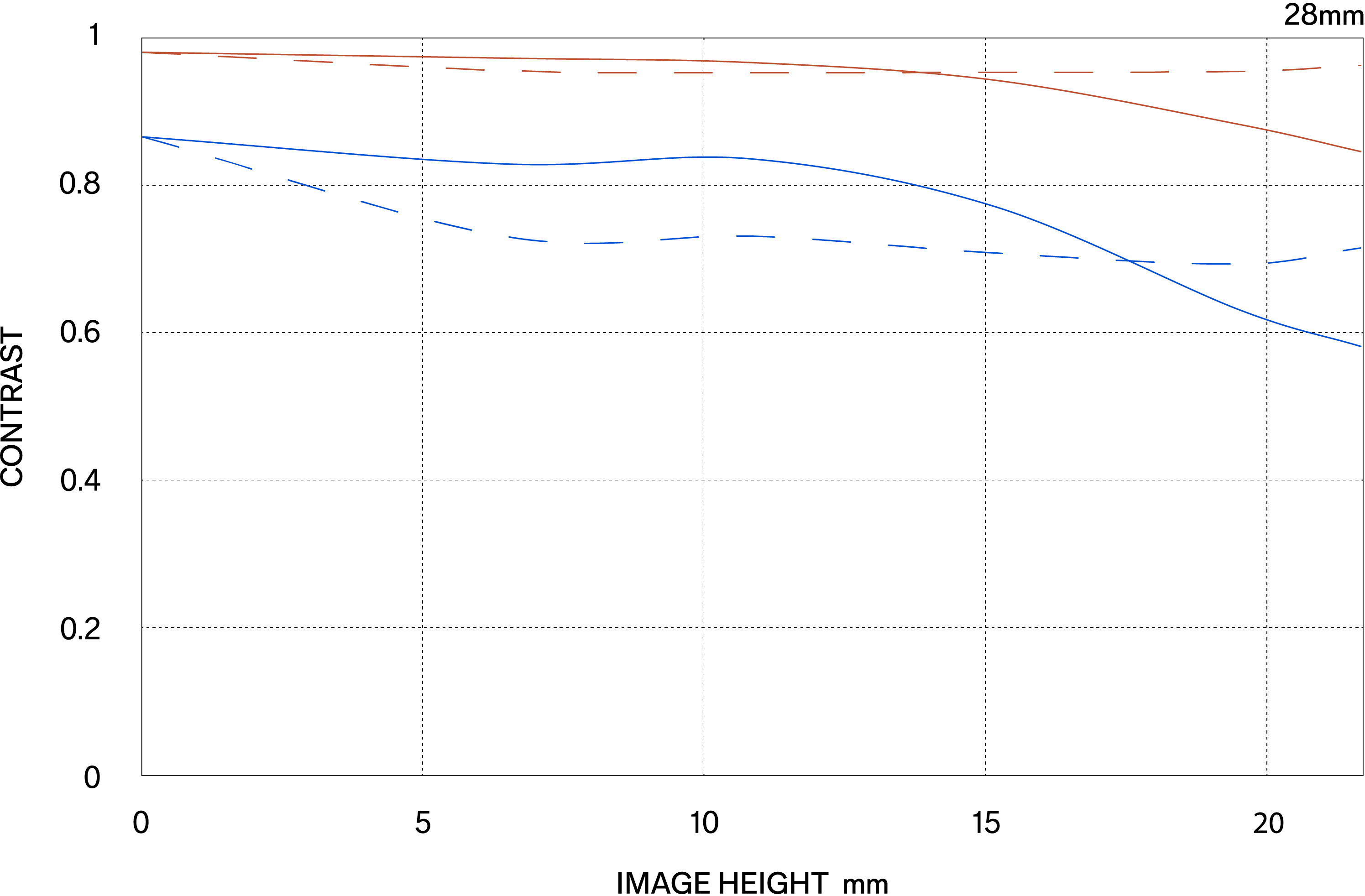

GEOMETRICAL MTF 70mm


Inner zoom
The lens incorporates an inner zoom. With their unchanging barrel length, these lenses also enhance balance and stability for the photographer. Furthermore, since the front of the lens does not rotate, polarizing filters can be used with extra convenience.
Exclusive low-dispersion glass
Careful arrangement of exclusive low-dispersion glass elements gives SIGMA lenses superlative image rendition untarnished by residual chromatic aberration.
Super Multi-Layer Coating
Sigma's own Super Multi-Layer Coating suppresses flare and ghosting by preventing reflections with in the lens. All lenses in the current Sigma range feature this original technology. In digital cameras, flare and ghosting may also be caused by reflections between the image sensor and lens surfaces. Here too, Sigma's Super Multi-Layer Coating is highly effective, assuring images of outstanding contrast.
Nano Porous Coating
NPC (Nano Porous Coating) incorporates porous silica as the coating material. The porous silica layer has nano-sized holes with air inside. Having holes of this size enables a large reduction in the refractive index, allowing the reflectance to be lowered more than conventional anti-reflective coatings. As a result, reflected light causing flares and ghosting is sharply reduced, achieving clear image quality.
Water and oil repellent coating
Incorporates a water and oil-repellent coating that allows water to be wiped away easily and prevents oil and grease from sticking to the surface, even in challenging shooting conditions. At the same time, the maintenance of the lens surface becomes easier.
Focus Mode Switch
Using this switch, it is possible to switch the focus mode between AF and MF.
Linear focus / Non-linear focus (for L-Mount only)
A focus movement method of interchangeable lenses for mirrorless cameras in relation to the rotational angle of the focus ring during manual focusing. With "non-linear focus" the amount of focal point movement varies depending on the focus ring rotational speed. With linear focus, if the focus ring rotational angle is the same, the amount of focal point movement remains the same regardless of the focus ring rotational speed.
Stepping Motor
The lens is capable of smooth, quiet and high-speed AF made possible by a stepping motor, as well as supports Face/Eye Detection AF and video AF.
Mount with Dust and Splash Resistant Structure
The lens mount incorporates rubber sealing to protect the mount from dust and water drops.
Other
- Rounded diaphragm
- Compatible with high-speed autofocus
- Compatible with SIGMA USB DOCK UD-11 (sold separately / L-Mount only)
- High-precision, durable brass bayonet mount
- Support DMF and AF+MF
- Designed to minimize flare and ghosting
- Every single lens undergoes Sigma's proprietary MTF measuring system
- Mount Conversion Service available
- "Made in Aizu, Japan" craftsmanship











